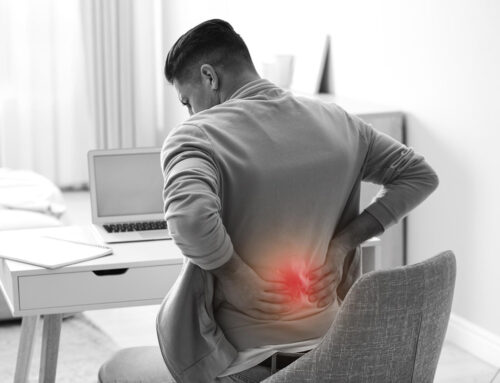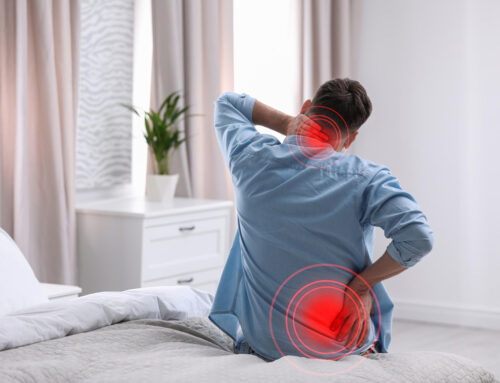Spinal stenosis is a common condition that affects millions of people worldwide. It is a condition that occurs when the spaces within the spinal canal become narrowed. This results in pressure on the spinal cord or the nerves that exit the spine. Spinal stenosis can occur in any part of the spine. But it is most common in the lower back (lumbar spine) and the neck (cervical spine). In this blog post, we will explore spinal stenosis in detail, including its causes, symptoms, diagnosis, treatment options, lifestyle changes, and coping strategies to help those living with the condition. Whether you are recently diagnosed with spinal stenosis or are looking to learn more, this guide will provide you with valuable information to help you better understand and manage the condition.
Causes of Spinal Stenosis
Spinal stenosis can be caused by a variety of factors, including:
- Aging: The primary cause of spinal stenosis is aging. As we age, the tissues and bones in our spine begin to deteriorate, leading to the development of spinal stenosis.
- Herniated discs: Herniated discs, also known as slipped or ruptured discs, occur when the soft tissue inside the disc that cushions the vertebrae in the spine pushes through the outer layer of the disc. When this happens, the herniated disc can press on the spinal cord or nerve roots, leading to spinal stenosis.
- Arthritis: Arthritis is a condition that causes inflammation in the joints, which can lead to spinal stenosis. The most common type of arthritis that causes spinal stenosis is osteoarthritis, also known as degenerative arthritis. Osteoarthritis is a condition that occurs when the cartilage that cushions the joints wears away over time, causing the bones to rub against each other.
- Tumors: Spinal tumors can also cause spinal stenosis by taking up space within the spinal canal. Tumors can either be primary, meaning that they originate in the spine, or secondary, meaning that they have spread from another part of the body.
- Trauma: Trauma to the spine can cause physical damage to the bones, ligaments, and tissues in the spine, leading to the development of spinal stenosis. This trauma can occur due to various reasons, including motor vehicle accidents, falls, and sports-related injuries.
Symptoms of Spinal Stenosis
The symptoms of spinal stenosis depend on the location of the condition. In the lumbar spine, the symptoms of spinal stenosis include:
- Pain or numbness in the lower back, buttocks, and legs
- Weakness in the legs
- Difficulty walking
- Loss of bladder or bowel control in severe cases
In the cervical spine, the symptoms of spinal stenosis include:
- Pain or numbness in the neck, shoulders, and arms
- Weakness in the arms
- Difficulty with fine motor skills
- Loss of bladder or bowel control in severe cases
It is important to seek medical attention if you are experiencing symptoms of spinal stenosis. Early diagnosis and treatment can help to prevent further damage and improve your overall quality of life. A proper diagnosis can also rule out other potential causes of your symptoms, which may require different treatment options.
Diagnosis of Spinal Stenosis
The diagnosis of spinal stenosis begins with a physical exam and a review of your medical history. Your doctor may also order imaging tests, such as an X-ray, CT scan, or MRI, to confirm the diagnosis. These tests can help your doctor determine the location and severity of the stenosis.
In addition to a physical exam and review of medical history, a diagnosis of spinal stenosis may also involve a series of other tests and procedures. These can help to confirm the diagnosis, determine the extent of the stenosis, and rule out other possible causes of symptoms.
Imaging tests
One common diagnostic test for spinal stenosis is imaging tests. X-rays, CT scans, and MRI scans can all provide detailed images of the spine and help to identify areas of narrowing. X-rays can show the alignment and stability of the spine, while CT scans provide detailed cross-sectional images. MRI scans use radio waves and a magnetic field to produce highly detailed images of the soft tissues of the spine, including the spinal cord and nerves.
EMG or NCS
Your doctor may recommend other diagnostic procedures, such as electromyography (EMG) or nerve conduction studies (NCS). These tests can help to assess the functioning of the nerves and muscles in the affected area and may be used to rule out other possible causes of symptoms, such as nerve damage or muscle disorders.
Other tests
Your doctor may also recommend other imaging tests, such as myelography or a bone scan. These tests can help to identify any abnormalities or damage to the spinal cord or vertebrae. Myelography involves injecting a dye into the spinal fluid, which can then be seen on X-rays or CT scans. Bone scans use a radioactive tracer to detect areas of increased bone activity, which can indicate areas of spinal stenosis or other bone-related conditions.
Treatment for Spinal Stenosis
The treatment options for spinal stenosis depend on the severity of the condition, the location of the stenosis, and the underlying cause. Some of the most common treatment options for spinal stenosis include:
- Medications: Over-the-counter pain medications may be used to relieve mild pain. In some cases, prescription medications such as muscle relaxants or opioids may be used to manage severe pain.
- Physical therapy: Physical therapy can help improve mobility, strength, and flexibility. A physical therapist may teach exercises that can be done at home, as well as manual therapy techniques such as massage or joint mobilization.
- Steroid injections: Steroid injections are a common non-surgical treatment option for spinal stenosis. These injections work by delivering a potent anti-inflammatory medication directly to the affected area, which can help to reduce inflammation and alleviate pain.
- Surgery: If symptoms are severe and other treatments have not been successful, surgery may be necessary to relieve pressure on the spinal cord or nerves. Surgery may involve removing bone or tissue that is pressing on the spinal cord or nerves or widening the spinal canal. Consider consulting the best spine surgeon in India for proper treatment.
Prevention
Spinal stenosis cannot always be prevented. But, there are some steps individuals can take to reduce their risk of developing the condition. These include:
- Maintaining a good posture: Poor posture can put pressure on the spine, which can lead to stenosis over time. It’s important to sit and stand up straight, with shoulders back and feet flat on the ground.
- Staying active: Regular exercise can help keep the back muscles strong and flexible. Low-impact exercises, such as walking, swimming, or yoga, may be especially beneficial for individuals with spinal stenosis.
- Avoiding repetitive motions: Repeatedly performing the same motion, such as lifting heavy objects, can put excessive strain on the back and increase the risk of developing spinal stenosis.
- Quitting smoking: Smoking can damage the tissues in the spine and increase the risk of developing spinal stenosis. The nicotine and other harmful chemicals in cigarette smoke can damage the tissues in the spine, leading to the development of spinal stenosis.
Conclusion
Spinal stenosis is a frequently encountered medical condition that can lead to discomfort, numbness, and weakness in the back and legs. This condition arises when the spinal canal undergoes a narrowing, exerting pressure on the nerves or spinal cord. Spinal stenosis cannot always be prevented. There are steps individuals can take to reduce their risk of developing the condition. Treatment options vary depending on the severity of the condition but may include medications, physical therapy, steroid injections, or surgery. It is wise to consult the top spine surgeon in Bangalore for proper treatment. If you are experiencing symptoms of spinal stenosis, it’s important to see a doctor to determine the underlying cause and develop a treatment plan that works for you.





Get Social